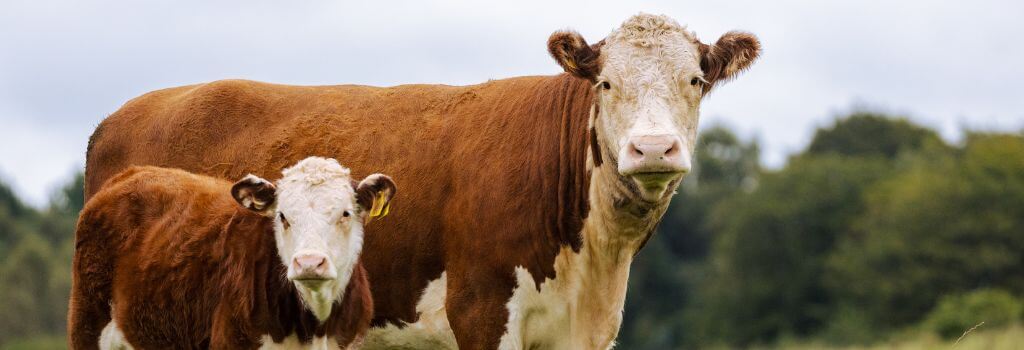Healthy, fertile bulls are integral to any cattle breeding program. A single bull can be responsible for dozens of pregnancies in a season.
With so much of a successful breeding operation – like calving rates, herd genetics, and bottom line – resting on the quality of bulls, it’s important to make sure the bulls you’re using are in top form. That’s why breeding soundness exams (BSEs) are such a valuable management tool. These pre-breeding evaluations go beyond a simple “once-over” to assess a bull’s physical health, reproductive anatomy, and semen quality, helping you ensure the success of your breeding season before it even begins.
Bull Breeding Soundness Exams Explained
A breeding soundness exam is essentially a “pre-breeding check-up” conducted by a veterinarian to ensure a bull is capable of effectively breeding cows and heifers during breeding season.
These exams involve multiple components to give veterinarians and breeders a comprehensive picture of an individual bull’s fertility and overall health. The initial steps of a BSE will involve a physical examination that looks at locomotion, eyesight, accessory sex glands, scrotum, sheath, and penis.
- Physical examination – Checks the bull’s general health, body condition, eyes, feet, legs, and reproductive anatomy – including the penis, scrotum, and testicles – for any abnormalities or injuries that could affect breeding performance.
- Scrotal circumference measurement and assessment – The circumference of a bull’s scrotum is a great indicator of the bull’s reproductive potential. Larger scrotal size usually indicates higher sperm production and earlier puberty in daughters, so this is an important fertility indicator in both the short and long term.
Following the initial physical assessment, the next step in a BSE is a semen quality evaluation.
- Semen evaluation – In this part of the BSE, the bull’s semen is collected and examined for sperm concentration, motility (movement), and morphology (shape). Bulls must meet minimum thresholds to be considered "satisfactory breeders," as the quality of a bull’s semen greatly impacts their reproductive viability. In fact, bulls must meet certain benchmarks for sperm motility and scrotum size in order to “pass” a BSE.
Every new bull entering a herd should undergo a breeding soundness exam, as should young bulls being prepared for sale – typically around 12 to 15 months of age. For optimal fertility and the best reproductive results, it’s also wise to test bulls before each breeding season to ensure they’re still in peak breeding condition.
What BSEs Can Tell Us About a Bull’s Fitness for Breeding
The ultimate goal of a breeding soundness exam is to ensure you’re turning out a bull that can actually get cows bred. To help owners better understand their bull’s breeding fitness, bulls are given a classification based on the findings of the BSE. Bulls can be assigned classifications, including:
- Satisfactory potential breeder
- Unsatisfactory
- Deferred
The classifications assigned to bulls are pretty self-explanatory, with the exception of “deferred,” which can indicate that the findings of the breeding soundness exam were inconclusive for the time being, and the bull may need to be examined at a later date. It’s essentially a way to say that a bull is unfit for breeding today, but that may change in the future, and another look at their reproductive health may be warranted. This can occur due to recent illnesses or injuries, reproductive tract issues, stress, nutritional changes, and even young age, as immature bulls can have smaller-than-expected scrotal circumference or lower sperm quality, simply because they haven’t fully matured yet.
The same is true in some cases where a bull may “fail” a breeding soundness exam and be marked unsatisfactory. Depending on the bull’s age and the reason for “failure,” veterinarians and breeders may opt to retest the bull if they believe that treatments or maturity may resolve the issue that led to failure.

Why Regular BSEs?
Fertile bulls are essential to a successful breeding program, and regular BSE can predict the success of a bull and his ability to breed. An individual cow is likely to contribute one pregnancy per year, while a bull can potentially contribute to dozens of pregnancies in a breeding season. With bulls responsible for so much of a herd’s breeding capabilities, it’s important to ensure that they’ll successfully be able to breed and not leave open cows for the breeding season.
When breeding soundness exams are conducted before each breeding season, there are a number of benefits that owners can gain, including:
- Preventing turning out a subfertile bull
- Identifying health or fertility issues
- Protecting your calving interval
- Monitoring the development and fertility of young bulls
Breeding Exams for Heifers and Cows
While breeding soundness exams are generally geared towards bulls, heifers and cows can have limited fertility checks performed as well. At our practice, cows and heifers may have their reproductive tract ultrasounded. During these checks, we evaluate them for normal structures and function at the ovaries and uterus.
These checks, when used in combination with breeding soundness exams for bulls, can help improve pregnancy rates, protect the herd’s productivity, and give owners more control over their breeding program.
Keeping Your Whole Herd Healthy
A breeding soundness exam is a valuable tool for making sure your bulls are ready for the breeding season, but fertility starts with overall herd health. Vaccinations are a key step, and they should always be given according to your veterinarian’s herd health protocol. Pre-breeding is also an ideal time to take care of other management tasks such as deworming, nutritional assessments, and any required regulatory testing.
If you have questions and you'd like to reach out to us, you can call us directly at (877) 499-9909, or you can email us at [email protected]. Don't forget to follow us on social media Facebook, Instagram.
